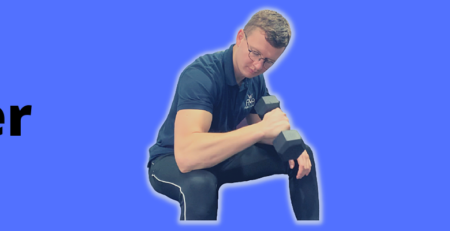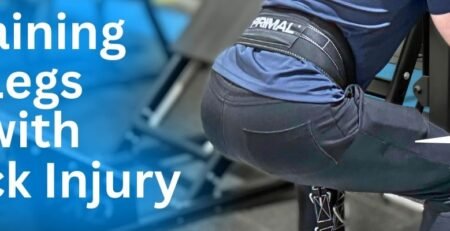Lower Back pain management blueprint
Lower back pain management blueprint
- Low back pain (LBP) is defined as pain that is localised below the ribs (costal margin) and above the inferior gluteal folds (bottom of the buttocks) with or without referred pain down the leg(s) (sciatica).
- Most of the cases (75% – 90% depending on research) are likely to improve in four to six weeks (ref)
- However, that does not mean that those who fail to improve in the initial six weeks will live forever in pain. 41% of that 10% that failed to improve quickly tend to improve in 1 year (ref). Therefore, if my maths are right we will have on average of 6 out of 100 people with LBP that may develop chronic pain. Chronic pain does can also be well managed and people live a full happy life. However, as the description suggests the pain is manageable rather than treatable.
What determines if a person is going to improve or will have to live with low back pain?
Well, there is no straight answer for this. However, studies (ref) suggest that psychosocial factors such as the high perceived risk of pain, high disability, and low education levels have a significant impact on the improvement rate.
Even if the prognosis is quite favourable, LBP remains one of the main reasons for disability and causes severe socioeconomic problems (ref).
Therefore, here at AMR we decided to put up together a blueprint of LBP management. This will have all up-to-date suggestions according to NICE guidelines, the latest evidence, and our own experiences.
Anatomy
The vertebral column consists of the Cervical, Thoracic and Lumbar regions. Lower back pain is referred to the pain that is coming from the Lumbar and Sacral areas. The pain can referred down to the buttocks or even legs.
Classification of the lower back pain
Lower back pain is divided into two main groups depending on the structure that is affected. The most commonly prevalent is Non-specific Mechanical back pain (NSMLBP). This is where no particular medical cause of pain is known. Specific back pain tends to have a pathology such as infection, vertebral fracture, tumor, radiculopathy present.
Most of the cases would however fall into the Non-specific lower back pain category. Furthermore, NSMLBP can be divided into acute, subacute, and chronic depending on the time the pain is present. Typically, acute pain is anything up to six weeks. Sub-acute pain is between six weeks and three months. Finally, chronic pain is anything lasting more than three months.
With that being said, a non-specific lower back pain definition can be confusing and very frustrating for people in pain. It does not mean that there is no reason for your pain. It simply means that the medicine has not advanced or we simply do not have recourses to single out a very specific reason for the pain.
Not to go into too much depth, but the pain itself is a very complex phenomenon. It is influenced by factors such as your previous experiences, emotional well being and hundreds of other factors. However, we are not going to delve into the psychosocial aspect of the pain in this blog.
The most common physical/biological causes of the NSMLBP are:
Discogenic issue
Mostly affects people in their 30s, 40s, and 50s. As we age, discs tend to dehydrate and lose their height. It is less likely that the nucleus will herniate then. However, still a possibility.
The pain associated with the discogenic back pain is firstly due to chemicals released at the time of prolapse/herniation. These tend to be inflammatory modulators mainly. Secondly, which is quite uncommon, physical pressure on the nerve root.
Joints
Facet joints join each vertebra together (please review the anatomy video above if needed). Each vertebra (except the very top cervical and the last lumbar vertebra) has two facet joints at the top and bottom.
Over the years our joints change. Multiple factors are influencing these changes such as inadequate load, not enough recovery time, poor nutrition, and genetics. Over the years, gaps between joints become narrower leaving smaller exit holes for nerves to leave the spine or travel down. This narrowing could cause either localised or referred pain.
Furthermore, age-related changes such as arthritis or a general joint overload can also result in inflammation. Inflammation due to chemical changes or increased physical pressure causes back ache.
Lastly, similar to your knee or hip joints, these small joints also have nerve supply – a small medial branch nerves. These carry pain signals to your brain. Therefore, if triggered can cause back ache.
Muscles
Muscular or myogenic back pain is perhaps the most common type of back pain. This type of back pain tends to be very sharp. Patients present with increased muscle tone in the paraspinals/back muscles which is sometimes referred to as a back spasm. As severe as the pain is felt, this type of back pain tends to resolve quickly without any ongoing issues.
Ligaments
These structures connect bony structures such as vertebra together for additional structural strength. These are unlikely to cause issues in day-to-day scenarios but can be affected by road traffic accidents, sporting injuries and falls.
Reasons for Low Back Soreness
The most common cause of acute back pain is a weakness or lack of structural resilience. To express in different terms, the issues occur when we do too much after doing too little preparation. Sometimes issues can occur when we do too much for the current back/body capacity without a substantial amount of rest or enough nutrients. This may sound very complicated, but overall, things are very simple. If our body is prepared for a specific task and has sufficient rest and nutrients, we will not have issues. Other factors that influence back pain or just general well-being are smoking and alcohol abuse. It might seem like an easy thing to say, but these factors do cause your body to work hard to either process alcohol in the liver or work on healing your lungs rather than using those resources on healing structures in the back.
When is imaging needed?
- One example is a spinal fracture. It is very rare to have a spinal fracture as it is a very strong robust structure and it is more common with people that suffer from osteoporosis or had a severe RTA or a fall. It typically presents with localised spinal tenderness and severe pain when standing.
- Another medical emergency is a Cauda Equina Syndrome (CES). This is when spinal cord compression is suspected. This could be due to an injury but it also could be a gradual process. It is a very rare condition and typically presents pain shooting down both legs, changes to sensation in the saddle area, loss of power, or sensation in the legs.
- Another reason for imagining is a suspected infection. This typically presents with backache and fever. It is relatively rare to have a spinal infection and it is more common with people who are immunocompromised or have a recent UTI or TB infection
- Imaging is also required when cancer is suspected.
- Continuous/unremitting pain even when supine and lasting more than 6 weeks
- Weight loss/night sweats
- PMH of Cancer
- Gradual onset/no MOI
- When a significant nerve root impingement is suspected that does not clear with conservative management
Nice guidelines for lower back pain with and without sciatica state:
“Imaging does not often change the initial management and outcomes of someone with back pain. This is because the reported imaging findings are usually common and not necessarily related to the person’s symptoms. Many of the imaging findings (for example, disc and joint degeneration) are frequently found in asymptomatic people. Requests for imaging by non-specialist clinicians, where there is no suspicion of serious underlying pathology, can cause unnecessary distress and lead to further referrals for findings that are not clinically relevant”
Now here we have a lot of information to digest. To sum everything out. Please see a physiotherapist/osteopath/doctor if you worry about your back pain with or without sciatica. They will be able to screen you for those severe pathologies that need immediate action. If you present with an NSMLBP then the next section is for you!
Management
Fundamental blocks of improvement
- Movement
- Sleep/rest and healthy diet
- Analgesia/medication
- Adjuncts – heat, massage, various other passive interventions
As much as we would like to make rehab or healing quicker, it takes time. Being patient and giving your body time to do adjustments is essential.
Voltaire once said, “the art of medicine consists of amusing the patient while nature cures the disease”. Obviously, medicine has progressed since the 18th century quite substantially, the saying remains relevant for most cases of lower back discomfort.
Obviously, good sleep and normal movement are difficult when in agony. This feeling is constant, tiring, and scary. Therefore, the actual sequence that we try to do to help people is:
- Control pain levels and reduce inflammation – this is usually using over the counter medication in the acute phase of lower back soreness
- Reduce muscle spasms to allow movement. Education and reassurance can help with that in the first instance. Secondly, massage, gentle supported movements, and exercises.
- Empowering patients to continue to improve themselves. Essentially, advice on how to act in various scenarios i.e. exercise progression, activity modification, support.
Below please find a few exercise protocols we typically recommend to our patients
The next series of exercises is useful if your back discomfort presents with sciatica
We have recently released a video discussing what is the best exercise for back soreness.
If you are struggling with lower back discomfort with or without sciatica and need a consultation, you could find us in Nottingham. You could give us a call on 0115 901 7867 or use our online booking system.











